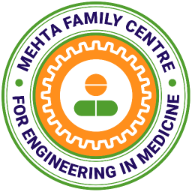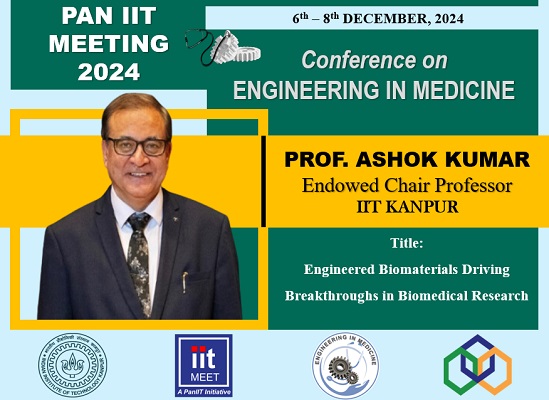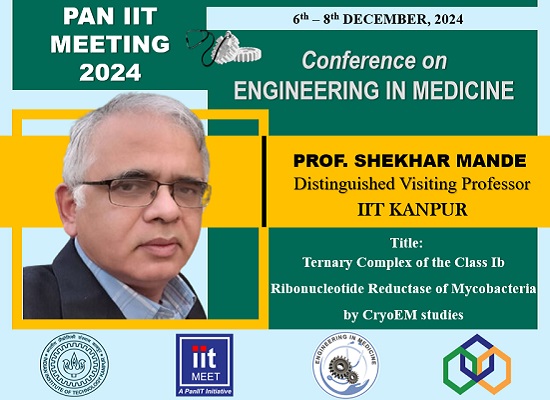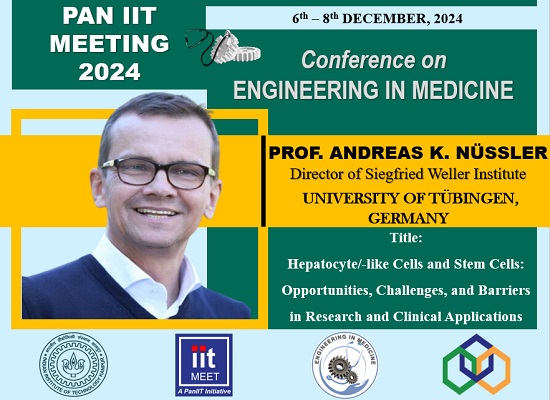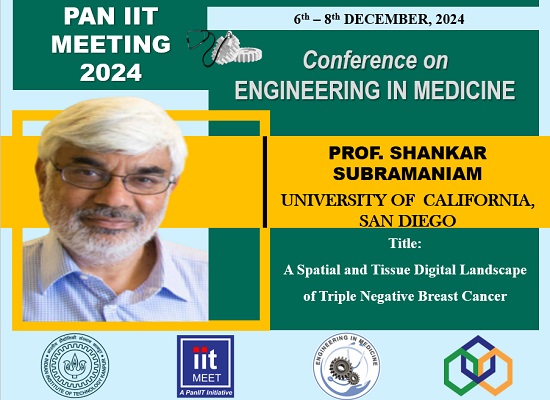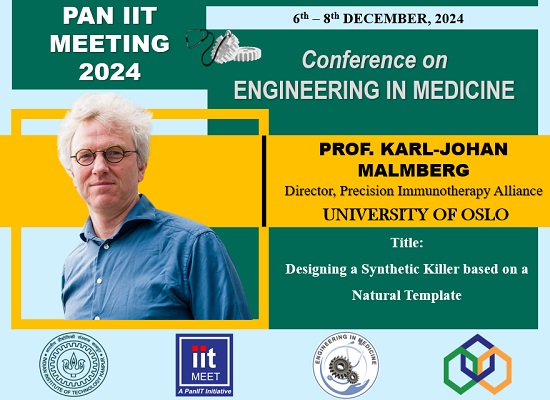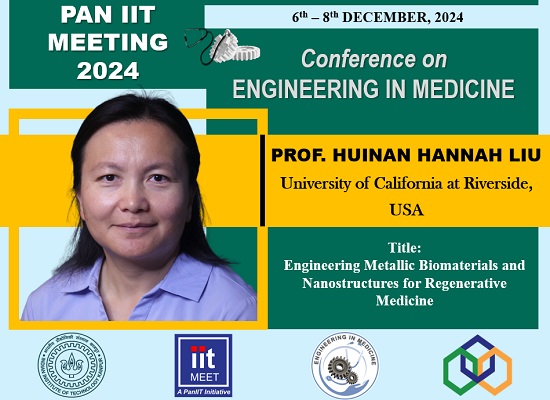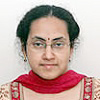MFCEM@IITK
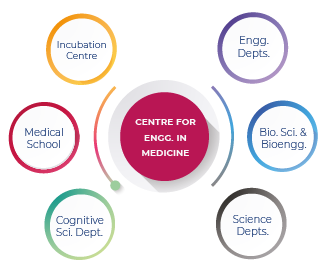 The next generation of healthcare innovation lies at the interface of multiple disciplines involving engineering and medicine. The Mehta Family Centre for Engineering in Medicine at IIT Kanpur strives to act as a catalyst for biomedical researchers and engineers to work together on challenging medical problems.
The next generation of healthcare innovation lies at the interface of multiple disciplines involving engineering and medicine. The Mehta Family Centre for Engineering in Medicine at IIT Kanpur strives to act as a catalyst for biomedical researchers and engineers to work together on challenging medical problems.

Shankar Subramaniam
ProfessorBioengineering, Bioinformatics and Systems Biology, Nanoengineering
International Advisor, Univ. California, San Diego
Systems Biology and Systems Medicine

Amitabha Bandyopadhyay
ProfessorBiological Sciences and Bioengineering
Skeletal development and differentiation.

Anusmita Sahoo
Assistant ProfessorBiological Sciences and Bioengineering
Protein Engineering, Vaccine design, Immunology, Antibody glycosylation

Appu K. Singh
Assistant ProfessorBiological Sciences and Bioengineering
Ion-channels, calcium signaling, Cryo-electron microscopy, X-ray crystallography, electrophysiology, fluorescence spectroscopy

Arjun Ramakrishnan
Assistant ProfessorBiological Sciences and Bioengineering
Systems neuroscience, decision making, mental health, electrophysiology, EEG, cognition

Arun Kumar Shukla
ProfessorBiological Sciences and Bioengineering
Structural biology; cellular signaling; combinatorial biology

Ashok Kumar
ProfessorBiological Sciences and Bioengineering
Downstream processing; affinity interactions and cell separations; nanotechnology; biomaterials; tissue engineering

Ashwani Kumar Thakur
ProfessorBiological Sciences and Bioengineering
Protein aggregation in diseases and therapeutic design; self assembly of proteins; biopharmaceuticals; neurodegenerative disorders

Bushra Ateeq
ProfessorBiological Sciences and Bioengineering
Molecular oncology and cancer therapeutics

Debanjan Dasgupta
Assistant ProfessorBiological Sciences and Bioengineering
Neurophysiology, Circuits and Systems Neuroscience, Behavioural assay, Electrophysiology

Debdeep Dutta
Assistant ProfessorBiological Sciences and Bioengineering
Genetics, Cell signaling, Mitochondria, Rare diseases, Neurological disorders

Dhirendra S. Katti
ProfessorBiological Sciences and Bioengineering
Tissue engineering; controlled drug delivery system; biomaterials

Dibyendu Kumar Das
Assistant ProfessorBiological Sciences and Bioengineering
Single molecule imaging; optical tweezers; virology and immunology

Hamim Zafar
Assistant ProfessorComputer Science and Engineering & BSBE
Computational biology; probabilistic modeling; single-cell biology; evolution and cancer

Jayandharan G. Rao
ProfessorBiological Sciences and Bioengineering
Gene therapy: Neuro-ophthalmic disorders; Blood disorders; Cancer gene therapy; Human molecular genetics

Nikunj Arunkumar Bhagat
Assistant ProfessorDepartment of Electrical Engineering
Department of Biological Sciences and Biosciences
Neural & Bio-signal processing, Medical Instrumentation, Brain-machine interfaces, Functional Electrical Stimulation, and Rehabilitation Engineering

Nisheeth Srivastava
Associate ProfessorComputer Science and Engineering
computational cognitive science, decision support systems, prognostics & health monitoring

Nitin Gupta
Associate ProfessorBiological Sciences and Bioengineering
Neuroscience, insect olfaction and behavior, digital interventions for human mental health
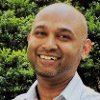
Nitin Mohan
Assistant ProfessorBiological Sciences and Bioengineering
Optical engineering; super-resolution microscopy; applications in neurodegenerative disorders, lysosomal storage disease & cancer

Pradip Sinha
ProfessorBiological Sciences and Bioengineering
Drosophila cancer genetics and therapeutics

Pragathi Balasubramani
Assistant ProfessorCognitive Science
non-invasive neural engineering, brain computer interfaces, neurodegenerative disorders, mental health

Priyanka Bagade
Assistant ProfessorComputer Science and Engineering
IoT applications in healthcare, AI/ML-based medical image analysis
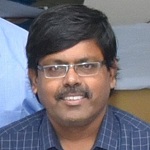
R.Sankararamakrishnan
ProfessorBiological Sciences and Bioengineering
Modeling and simulation of biomolecules; bioinformatics

Rakesh Majhi
Assistant ProfessorBiological Sciences and Bioengineering
Ion channels, Immune cell engineering, Tissue restoration

Robert Sonowal
Assistant ProfessorBiological Sciences and Bioengineering
Microbiota, aging, metabolites, antimicrobial resistance

Sai Chaitanya Chiliveri
ASSISTANT PROFESSORBiological Sciences and Bioengineering
Host-pathogen interactions, NMR spectroscopy
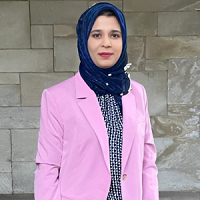
Sana Khanum
Assistant ProfessorDepartment of Chemical Engineering
Computational and Experimental Life Sciences; Reaction Engineering; Information Theory; Bioinformatics

Sandeep Verma
ProfessorChemistry
Nucleobase polymers, ordered peptide aggregates, metal-nucleobase interactions

Sri Sivakumar
ProfessorChemical Engineering
Multifunctional nanomaterials for bio-imaging and drug delivery, Nanocatalysts, Nanodevices

S.Ganesh
ProfessorBiological Sciences and Bioengineering
Neurobiology of disorders, stress biology, and human genetics

Sai Prasad Pydi
Assistant ProfessorBiological Sciences and Bioengineering
Diabetes, Obesity, NAFLD, Immunometabolism, GPCRs, Cell Signaling

Santosh K. Misra
Assistant ProfessorBiological Sciences and Bioengineering
Biosensors, personalized medicine, bubble therapy, 3D-printed biomedical devices, carbon composites, drug delivery systems, nanocomposites.

Shanu Jain
Assistant ProfessorBiological Sciences and Bioengineering
Liver Metabolic Disorders, G Protein-Coupled Receptors, Cellular Signaling, Genetic Mutations, Small Molecule Drug Discovery

Saravanan Matheshwaran
Assistant ProfessorBiological Sciences and Bioengineering
Chromatin dynamics and DNA repair; microbiology
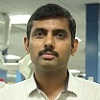
Sivaprakash K Ramalingam
Associate ProfessorBiological Sciences and Bioengineering
CRISPR/Cas9, disease modeling, hemoglobin regulation, cell and genetherapy, genetic disorders, malignancies

Suresh Kumar
Assistant ProfessorBiological Sciences and Bioengineering
Autophagy, colorectal and breast cancer
Prof. Ashwani Kumar Thakur
Professor & Head, Dept. of BSBE, IITK
This email address is being protected from spambots. You need JavaScript enabled to view it.
(91) 512-259-4077
(91) 512-259-4010
Dr. Nitin Gupta
Coordinator
This email address is being protected from spambots. You need JavaScript enabled to view it.
+91-512-259-4384
Dr. Anjali Bajpai
Program Manager
This email address is being protected from spambots. You need JavaScript enabled to view it.
+91-512-259-4019
Office Address
Department of Biological Sciences and Bioengineering
Indian Institute of Technology Kanpur
Kanpur 208016 (U.P)
Digital Medicine

In conversation with
Dr. Nikunj Arunkumar Bhagat
Assistant Professor
Department of Electrical Engineering,
Department of Biological Sciences and Biosciences,
and Mehta Family Centre for Engineering in Medicine.
MFCEM: Dr Bhagat, it is great to have you at IIT Kanpur. Your research straddles two disparate fields of Electrical engineering and Biomedical science. Having done a BTech and MTech in electrical engineering what drew you to apply your training to Biological/Medical problems?

Mental health issues such as depression remain inadequately addressed particularly in low- and middle-income countries (LMICs). In a collaborative study, Prof. Nitin Gupta and team have developed a new Unguided Computerized Cognitive Behavioral Therapy (cCBT)-based intervention: TreadWill; its use significantly reduces anxiety and depression in users. TreadWill holds great promise as an easy to use and an accessible intervention technology.
https://pubmed.ncbi.nlm.nih.gov/37099376/
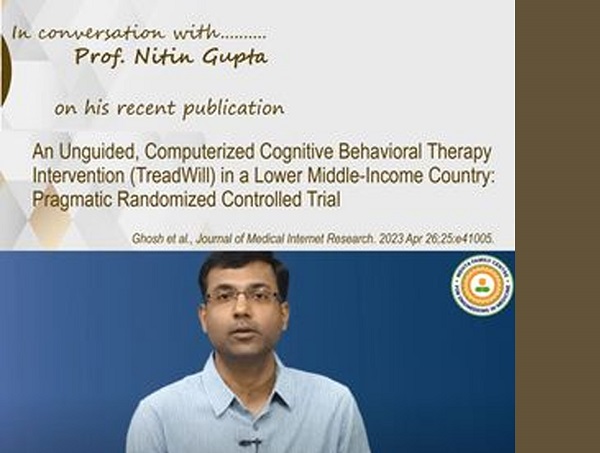
Prof Nitin Gupta talks about his recent published study on developing a new unguided Computerized Cognitive Behavioral Therapy (cCBT)-based intervention: TreadWill; and how its use significantly reduces anxiety and depression in users. The study was published in J Med Internet Res, April 26 2023.
https://www.youtube.com/watch?v=kD0-amDM3JQ
Overview
Increased penetration of internet and mobile technologies, along with advances in AI and modelling, present opportunities for a new paradigm in medicine: software is poised to take the role of a doctor in diagnosing the disorders; of a therapeutic aid or even therapy itself in the case of psychiatric problems; and of a powerful research tool in discovering new medicines. IIT Kanpur has strengths in these different domains of digital medicine.
Translational Value
Psychiatric and neurological disorders are among the largest but least addressed sources of disability in all countries. Depression alone affects 300 million people globally. The digital tools for psychiatry are readily translatable given the high penetration of internet-enabled mobile devices. TreadWill, developed at BSBE as an intervention for depressive symptoms, is currently undergoing a double-blind randomized controlled trial in human patients after clearance from the Institute Ethics Committee and registration at the NIH’s clinicaltrial.gov portal (https://clinicaltrials.gov/ct2/show/NCT03445598). It has already achieved the target of 600 study participants, and the results are expected to be out in late 2019. If the results show reduction in depression scores post-intervention, the tool can be released for public usage. Subsequent digital therapeutic and diagnostic tools developed at the center will also be rigorously tested and then released widely.
Future Plan/Grand Challenge
Digital technologies are powered by data. While the growing population of India (poised to become the largest in the world by 2024) and the wide range of socio-economic strata present a massive healthcare challenge, they also present a unique opportunity in terms of the amount of data generated that can be used for the development of the digital medicine approaches. Despite the huge burden posed by psychiatric problems, the treatment approaches for most brain disorders are outdated and ineffective. With increasingly stressful lifestyles, there is a pressing need to develop new forms of therapies, and to do this effectively we need to bring in artificial intelligence and cognitive science into the fold of brain therapeutics. The challenge that we would like to address is whether we can harness these technologies to develop new and effective digital interventions for various psychiatric disorders, including anxiety, obsessive compulsive disorder, borderline personality disorder, and addiction? Similarly, can we develop automated diagnostic tools using various kinds of medical images and real time monitoring of patient information using mobile devices? These digital technologies have the potential to democratize healthcare in India and other developing countries by addressing the shortage of doctors and medicines with high scalability and low costs. IIT Kanpur, with its strong roots in computing and engineering, and strong programs in BSBE and cognitive science, is in an ideal position to develop the next generation of digital medicine tools.
Molecular Medicine and Engineering
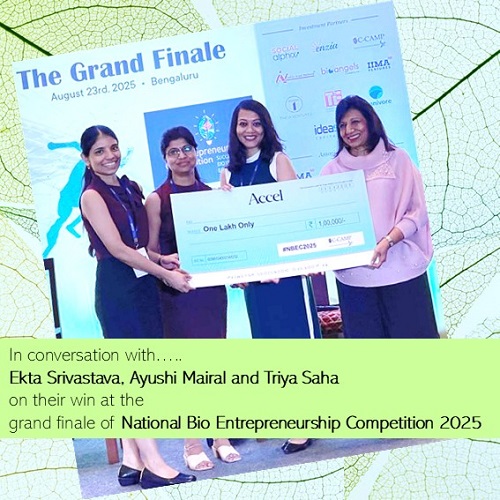
In conversation with Ekta Srivastava, Ayushi Mairal and Triya Saha on their win at the grand finale of National Bio Entrepreneurship Competition 2025
Read More

In conversation with Geetanjali Singh, Winner: Highest Technology Readiness Level N.I.C.E. Rendez-vous Conference, Summer 2025.
Read More

In conversation with Dr. Debdeep Assistant Professor Department of Biological Sciences and Bioengineering and the Mehta Family Centre for Engineering in Medicine.
Read More

In conversation with Shantanu Sen PhD student of Prof. Sandeep Verma, on his recent study: “Synthesis of a highly thermostable insulin by phenylalanine conjugation at B29 Lysine”.
Read More

In conversation with Prof. R. Sankararamakrishnan recipient of the “Distinguished Teacher Award” IIT Kanpur, 2023
Read More

Prof. Nitin Gupta and team in a pioneering study display how individual chemical odorants are perceived and processed by the neuronal circuitries in the mosquito brain. Their results provides a unifying foundation to understand the neural basis of olfaction.
https://pubmed.ncbi.nlm.nih.gov/37322224/

A study by Prof. Sandeep Verma and group demonstrating the fabrication and use of highly sensitive PAN nanofiber and Silver nanoparticle-based SERS sensor for detection of β-Amyloid Peptides for Alzheimer's disease. The study offers potential to develop breakthrough platforms for ultra sensitive and selective detection of multiple biomarkers.
https://pubmed.ncbi.nlm.nih.gov/37243517

Recurrent joint bleeding in hemophilic patients can lead to a painful condition of hemophilic arthropathy. Prof. Jayandharan Rao & team have identified, using a hemophilia mice model, key molecules that could be responsible for rapid degeneration of joint cartilage. The study opens up possibilities of using these as potential therapeutic targets to check the disease progression.
https://pubmed.ncbi.nlm.nih.gov/37183540/

Multi-Drug-Resistance (MDR) poses a serious public health concern; Prof. Sandeep Verma and team in a collaborative effort have come up with a rationally designed cationic peptide conjugate that displays effective antibacterial activity against clinical MDR S. aureus. The study paves way to develop inhibitors for severe staphylococcal infections.
https://pubmed.ncbi.nlm.nih.gov/37071585/

Prof Jonaki Sen talks about her recent study on forebrain development in chick embryo. Prof. Sen discusses how her team identified novel downstream mediator of retinoic acid signaling required for invagination of forebrain roof plate, and how this study could help better understand certain defects leading to cerebral malformation in humans.
https://www.youtube.com/channel/UCjmDrSkNVS_IIZ5k0j6oy-A

GPCRs represent one of the largest family of cell-surface receptors regulating a plethora of cellular events and biological processes. In a collaborative study, Prof. Arun Shukla & Prof. Stephan Grzesiek, their teams demonstrate how multi-site phosphorylation controls interaction of GPCR or Chemokine Receptor with Arrestin. The study paves for better understanding of the diversity of GPCR signaling and developing potential intervention strategies.
https://pubmed.ncbi.nlm.nih.gov/37244255/

How diverse phosphorylation patterns in GPCRs influence recruitment, activation, & functional outcomes of its interacting partners is key to a comprehensive understanding of GPCR Biology. Prof. Arun Shukla & team, in a seminal study, using Cryo-EM have identified a novel motif in GPCRs that is critical for interaction and activation of its key molecular partner, the beta-Arrestins. The study paves way for design of novel intervention strategies targeting GPCR signalings.
https://pubmed.ncbi.nlm.nih.gov/37209686/
Overview
An existing research area at BSBE that encompasses attributes of fundamental biology, translational research and product development comes under the broad theme of Molecular Medicine and Engineering. BSBE currently hosts excellent research programs on cancer biology, gene therapy, chemical, synthetic and computational biology, which are utilizing a broad repertoire of cutting-edge approaches to address frontier research questions in the respective fields. More importantly, there is an unparalleled opportunity for us to expand our already strong footprint in this particular thematic direction by embarking on rapidly evolving, next-generation research sub-themes, and even breaking new grounds with respect to inception of currently lacking ambitious frameworks of interdisciplinary science.

Onco-targeting by precision medicine
One of the existing strengths at BSBE is a world-class program in cancer biology with a long-term goal of developing novel therapeutics, especially for cancers predominatly present in Indian sub-continent. Cancer is a clinically heterogeneous disease manifested by intra-tumoral as well as inter-patient molecular variability.

Genome and Cellular Engineering
Another major research strength at BSBE where we have unique edge with a multidisciplinary set of expertise is in the broad theme of molecular therapeutics. For example, the importance of gene and cell therapy for treating disorders with specific genetic defects has been recognized for long.

Chemical and synthetic approaches to drug discovery
One more research theme where BSBE faculty are amongst National and International leaders is chemical, structural and computation biology of important drug-targets involved in various types of human disorders.

Neuroscience and Neuroengineering
Understanding the brain is the ultimate challenge for the 21st century. Compared to other organs and systems in the body, the brain is by far the least understood. To be successful, neuroscience needs an amalgamation of techniques from multiple disciplines.
Grand Challenge
Overall, we envision that the upcoming phase of our research program spanning the next ten years or so, will involve faculty from the molecular medicine and engineering program from the four thematic areas (Chemical and synthetic approaches to drug discovery, Onco-targeting by precision medicine, genome and cellular engineering and Neuroscience and neuroengineering) to synergize their efforts to develop enabling bench-to-bedside solutions for the treatment of solid tumors (oral, breast, prostate and liver cancer) and neurological disorders. The focus of this initiative will be to develop local healthcare solutions to these conditions, including low cost diagnostics and therapeutics by employing a range of innovative genomic and proteomic analysis, orphan small-molecule and receptor scanning approach and development of synthetic gene/drug delivery systems. Long-term, we expect that this multidisciplinary research initiative in cancer/neurological disorder therapeutics will have a societal impact by

generation of high-quality intellectual property, specialized technical expertise and innovative products that will significantly improve the pace and output of research and development in these fields in India. This will be further supplemented by the proposed post-graduate program in Molecular Medicine and Engineering as an academic initiative of this program, to further train and disseminate this knowledge to the Nextgen leaders. Such a hub of excellence, once established, will seamlessly integrate into the proposed medical school at IIT-K to further drive and promote our vision to be leaders in this field.

The Bhupat & Jyoti Mehta Family Foundation
MFCEM at the Indian Institute of Technology Kanpur is generously supported by the Mehta Family Foundation.
